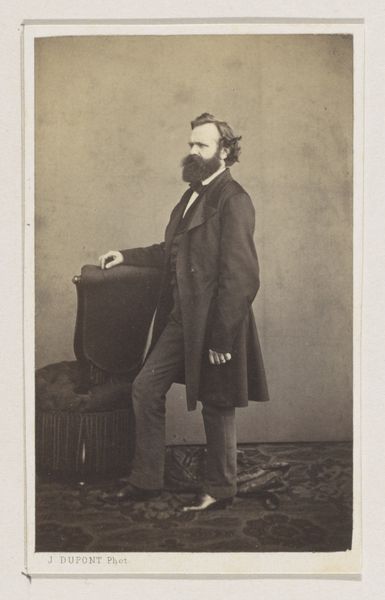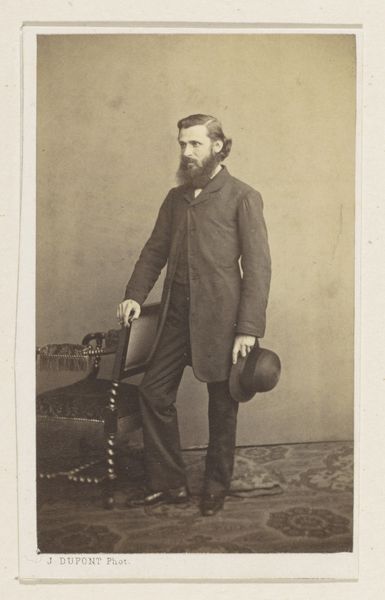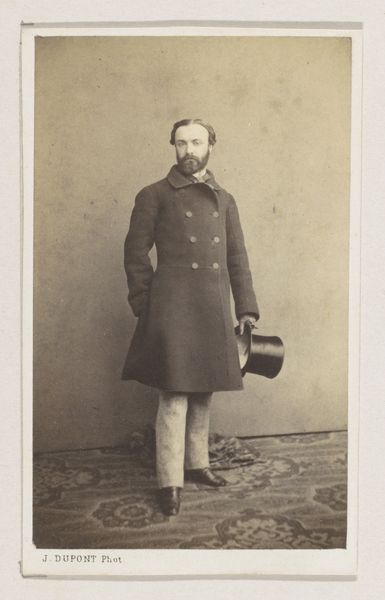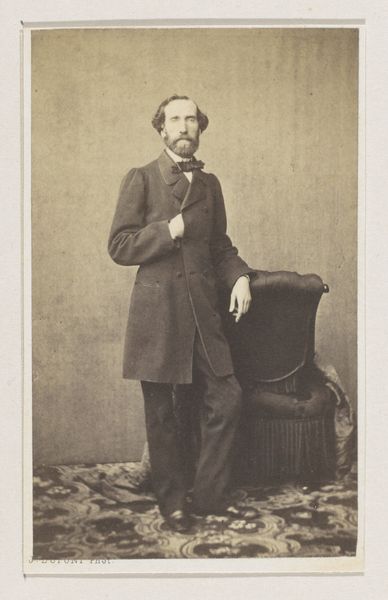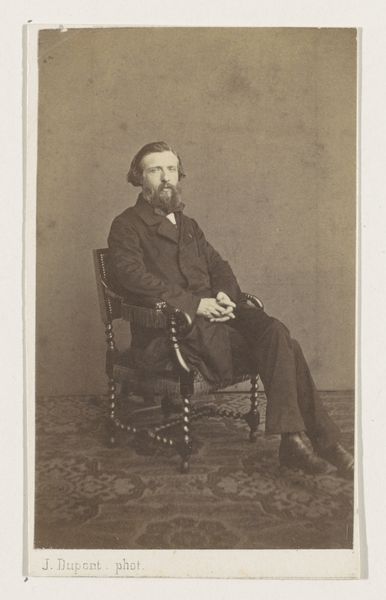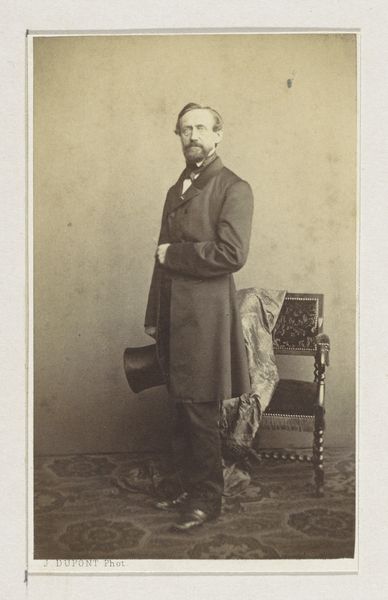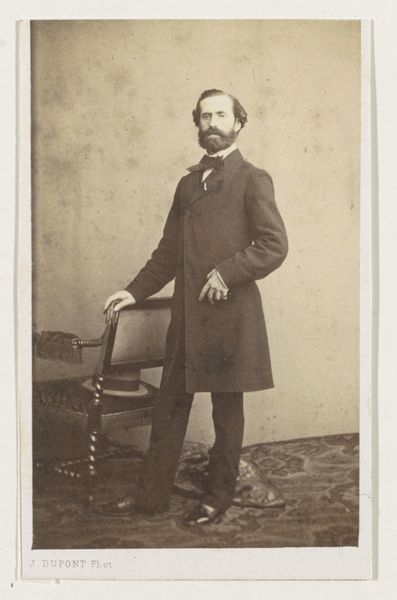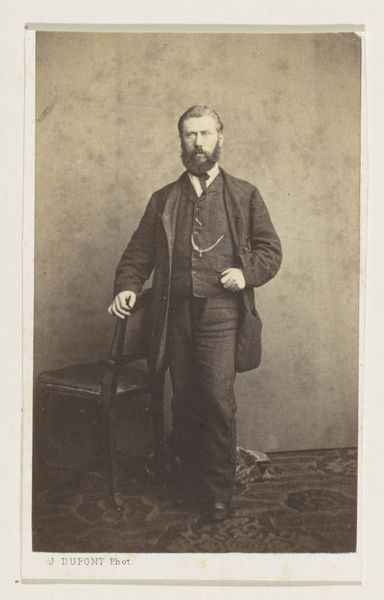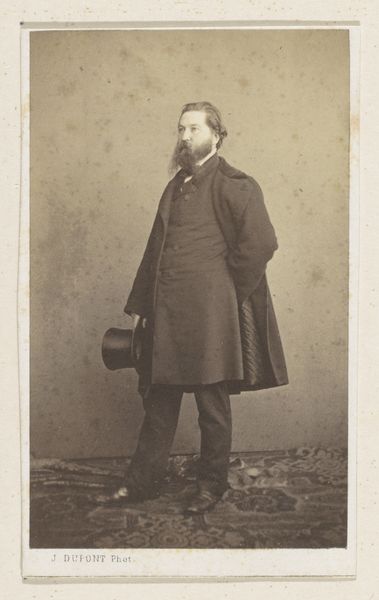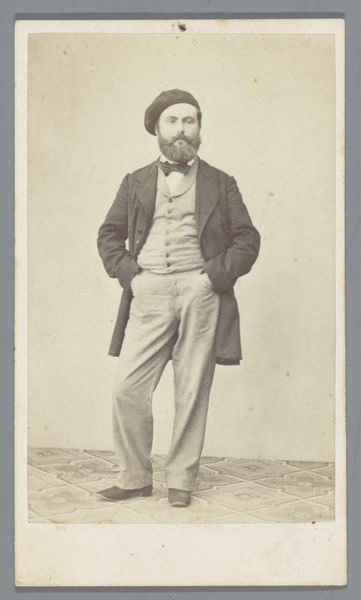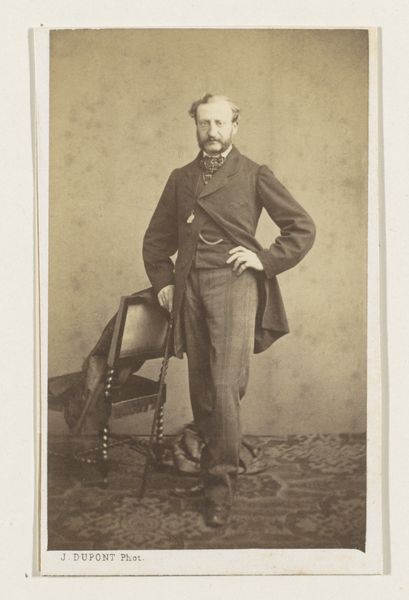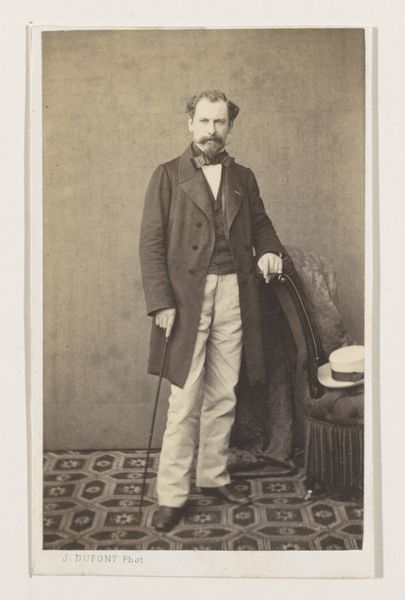
Dimensions: height 100 mm, width 62 mm
Copyright: Rijks Museum: Open Domain
Editor: So, this is a gelatin silver print titled "Portrait of the Sculptor Jacques De Braekeleer, Full Length" taken by Joseph Dupont in 1861. It's a striking image—very straightforward, yet the sculptor has this intense gaze that’s really captivating. I'm curious, what are your thoughts on this portrait? Curator: You know, seeing this, I feel like I've stepped into a smoky, late 19th-century salon. The image is soaked in a kind of quiet dignity. I love how Dupont captures De Braekeleer not as some untouchable artistic genius, but as a working man, you know? A bit rumpled, slightly… I don’t know, there’s an approachable quality. Editor: I noticed that too. He's got that overcoat and his hand casually resting on the chair, he looks confident and comfortable in his skin, and those dark clothes stand out against that soft, blurry background. Curator: Exactly! And consider the period, early photography. It wasn't just pointing and shooting. It was a deliberate process. This image hints at the Romantic era's focus on the individual, on artists as almost heroic figures. Though, De Braekeleer doesn’t exactly scream hero does he? Editor: Not really. Do you think Dupont's trying to capture some essence of the artist, rather than just an image? Curator: That's it! Photography, then, sought to capture a person's soul. Can an image contain more than just visual data? Can it capture feeling? It makes me consider what it truly means to *see* someone. Editor: This was eye opening for me! I wouldn't have picked up on the Romantic undertones. Curator: It's all in the seeing, isn't it? Thank you, this discussion was food for thought.
Comments
No comments
Be the first to comment and join the conversation on the ultimate creative platform.
